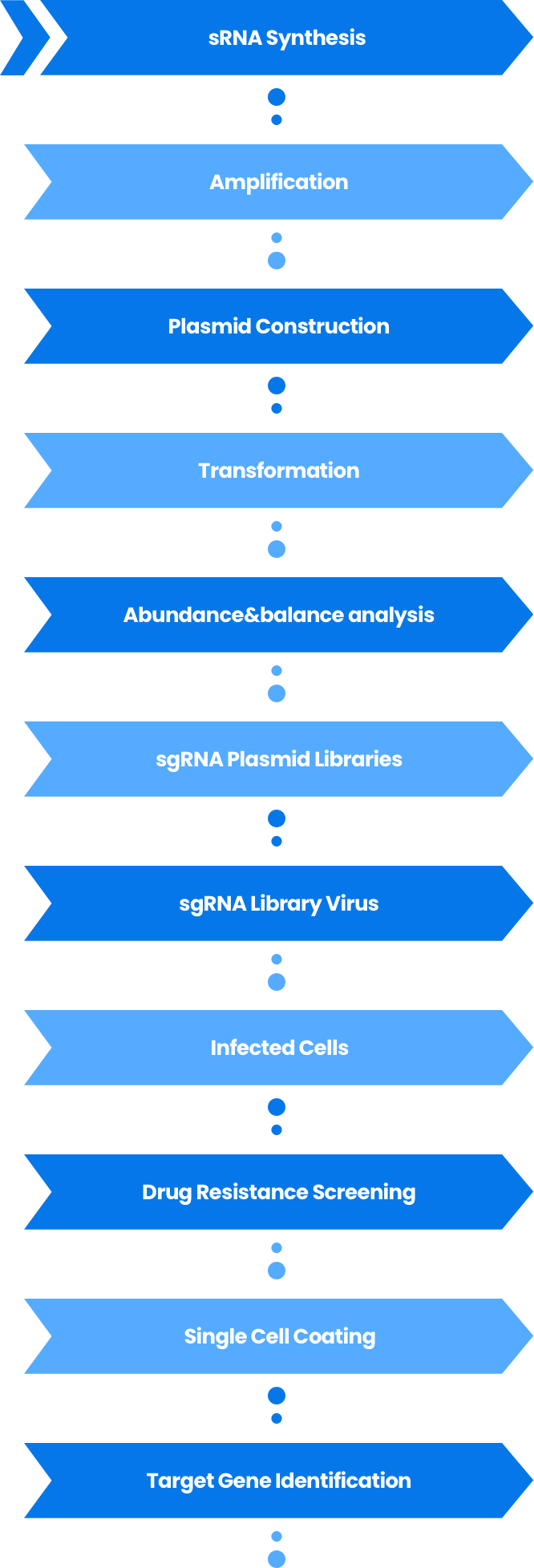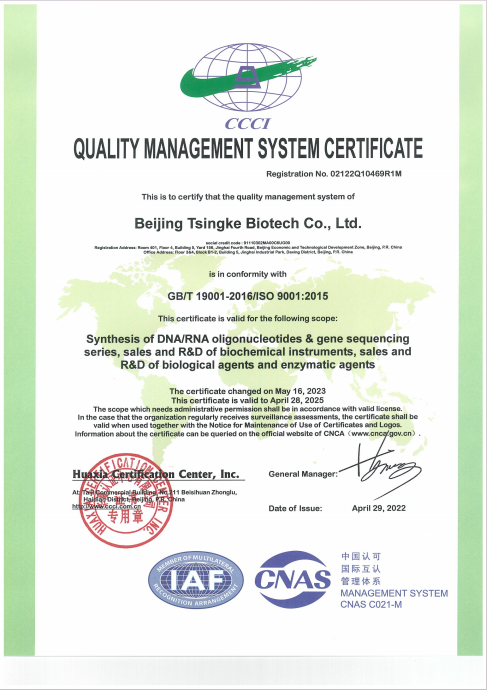- sgRNA library construction
CRISPR gene editing technology, due to its simplicity and versatility, has become a powerful tool for studying molecular biology mechanisms. When the sgRNA targets a single gene, CRISPR is regarded as an efficient tool for specific single-gene knockout. However, when sgRNA targets the whole genome or a specific gene library, CRISPR upgrades to a whole-genome or gene library screening tool. Based on the whole genome sequence of the target organism or the gene library sequence related to a specific function, an sgRNA library is designed and constructed. This library typically contains thousands to tens of thousands of sgRNAs targeting different genes, with multiple sgRNAs designed for each gene to increase the success rate and effectiveness of genome editing.
Through gene library services, relevant gene library construction and screening services can be provided to support researchers in obtaining precise gene library resources. Subsequent CRISPR library screening can establish a whole-genome knockout library or a gene knockout library related to specific functions of the target organism, and through functional screening, enrichment, PCR amplification, and deep sequencing analysis, genes related to the phenotype can be identified.
- Site-directed saturation mutagenesis library
Site-directed saturation mutagenesis library, also known as a degenerate library, is a molecular biology technique used to study the function of specific protein sites by introducing all possible amino acid substitutions. The core of this method lies in using specific degenerate primers (e.g., NNK or NNN sequences) to introduce amino acid variations at one or more positions in the gene sequence. For example, the NNK strategy generates 32 different codons, including 20 amino acids and stop codons. Although the amino acid distribution is not uniform, this method efficiently and cost-effectively generates highly diverse mutant libraries.
This technique is widely used in protein structure-function domain research, directed evolution of proteins, enzymes, and antibodies, identification and modification of key amino acids in enzyme active sites, antibody humanization, and fine-tuning antibody affinity and binding properties. By replacing individual amino acids, it helps identify critical sites for protein function, optimize enzyme catalytic activity, stability, and specificity, and uncover the complex relationship between protein structure and function.
Tsingke offers sgRNA library construction and site-directed saturation mutagenesis library through Tsingke Gene Factory, providing high-quality, customizable solutions for gene editing and functional genomics research.










